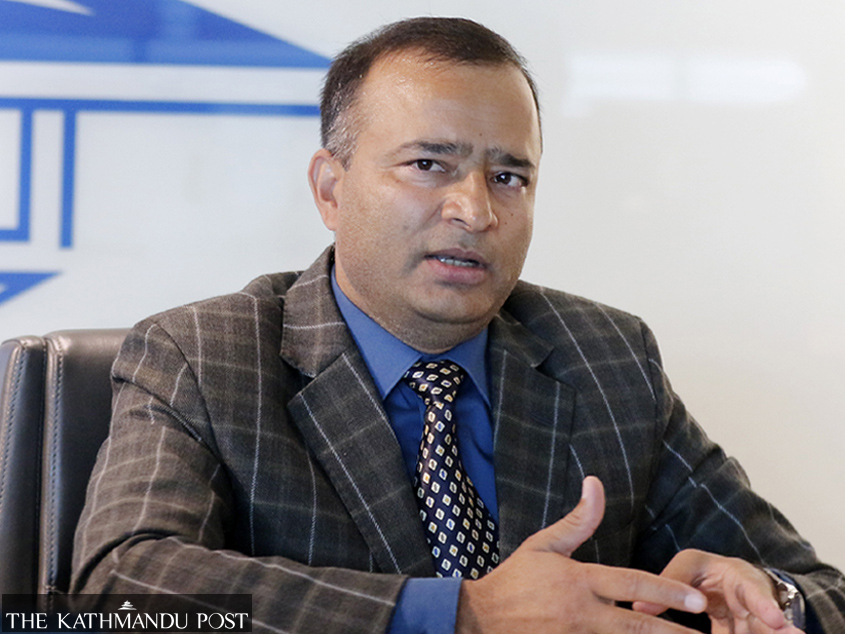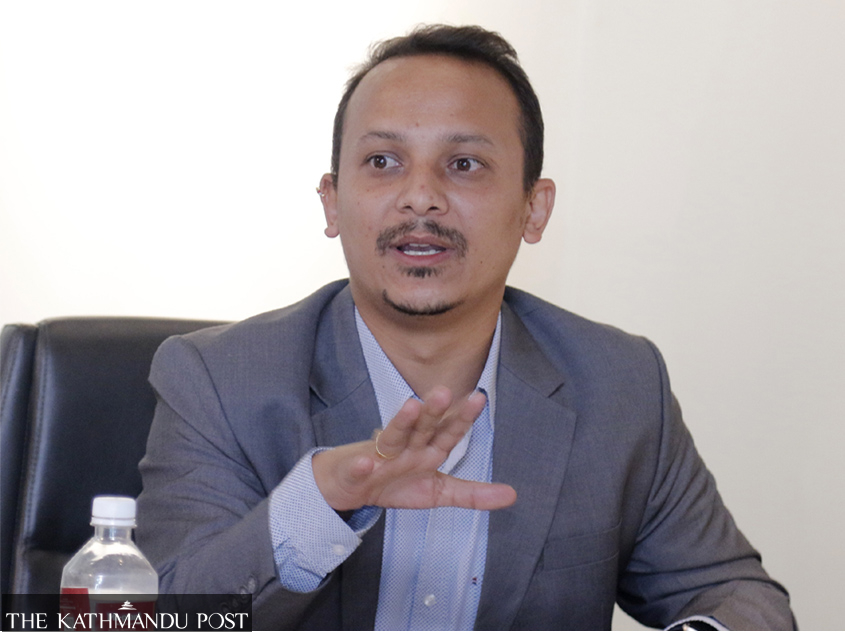Money
‘We cannot compare internet boom with e-commerce growth’
The Post talked with some key stakeholders about the status of e-commerce in Nepal, its potential, constraints and measures to be taken to realise its full potential.
Post Report
Almost the entire Nepali population has access to the internet, according to the Nepal Telecommunications Authority. But, according to the Connectivity in the Least Developed Countries Status Report 2021, even among countries with high internet penetration, awareness of e-commerce platforms is low in the least developed countries like Nepal. The Post talked with some key stakeholders about the status of e-commerce in Nepal, its potential, constraints and measures to be taken to realise its full potential. Excerpts:
Lino Ahlering, Managing Director, Daraz Nepal

Everyone connected to the ecosystem of e-commerce in Nepal has seen a lot of changes in the business in the last three years. The Covid-19 pandemic helped to accelerate the growth of the e-commerce sector around the world, and Nepal is not an exception to this trend. In the case of Daraz, progress has been tremendous. After Alibaba invested in Daraz in 2018, there has been a 1500 percent growth in terms of products delivered over the last three years while product varieties also increased by 1000 percent, and our team also increased from 90 to 700 people in normal times. Our payment partners have seen tremendous growth. Initially, 80 percent of orders used to come from Kathmandu Valley. We are trying to increase our foothold outside the valley as well. Now less than 50 percent of orders are coming from Kathmandu and this trend will continue.
Nepal may not be the biggest market within Daraz because of its relatively small population compared to Pakistan and Bangladesh, Alibaba invested in this market for the reason and they really believed in this market. The population of 30 million is still a big market. We can compare Nepal with Sri Lanka whose population is around 20 million but it has attracted more investment in e-commerce. The banking sector in Sri Lanka is more digitalised which made a difference. In Nepal, the banking sector took too long to digitalise the payment system. Another issue in Nepal is that internet data charges compared to Pakistan and Bangladesh are very high. The more data becomes accessible to people, the more the use of online services increases. Similarly, the more logistics become accessible, the more it will facilitate the growth of e-commerce.
In order to ensure timely delivery, we also invested in delivery by starting Daraz Express. Nepal needs to attract more investment in the e-commerce sector. But, there is a complicated process to bring foreign direct investment (FDI) to Nepal and it is time consuming. We would generally be happy if more competition happens because competition makes you more innovative. We are the market leader by far with 1.1 million Nepalis using Daraz every month. But, if more investment does not come in Nepal’s e-commerce sector, the ecosystem does not work well. As we are preparing for 11:11 sales, we hope to see a massive rise in sales. Sales in 11.11 increased by more than 18-19 times compared to normal days in every market.
Manohar Adhikari, Founder, Foodmandu

We started Foodmandu in 2010, there was no e-commerce company focused on the local market. A few of them started in the early 2000s but they were focused on bringing gifts for Nepalis from abroad. A few years before I started Foodmandu, I used to work for a company where it was difficult for us to find a good restaurant during tiffin time. We thought others may also have been facing similar problems. So, I started this business. As it was the early days of e-commerce, it was a challenge to bring our partner restaurants on board, and consumers were also required to be educated.
So, even though we started the company in 2010, only in 2015 could I get certain traction in the market. I think, by starting Foodmandu, we contributed to job creation to some extent and contributed to formalising our economy because our partners need to work transparently. During the lockdown, our presence supported the restaurant business. Now, the overall industry is growing and the company is also growing and the future is also bright. With the change in lifestyle and people getting busier, food delivery e-commerce companies like ours help them to get them food on time and eat on time and save time for people.
People have started feeling our value-added service and its importance. We have customers who have been taking service from us for more than a decade. The number of ordering frequencies is increasing.
For the growth of e-commerce, all factors need to play an equal and important role like the internet and payment mode. But I think logistics plays an important role for the growth of e-commerce business. There is a problem in finding the exact address of our customers despite the use of digital maps which is one of the biggest challenges to reach their doorstep without calling them.
The e-commerce business has been boosted drastically after the country went through the pandemic which has helped in the growth of online business by four-five years early.
For food delivery companies like ours expanding, our services in rural parts is challenging as most of the restaurants are centred in city areas and as food products are perishable, it becomes difficult to reach rural places.
Mahesh Sharma Dhakal, Senior Deputy Chief Executive Officer, Global IME Bank

Particularly after Covid-19, there has been growing use of e-payment. Footfall is decreasing at bank branches. While the pandemic invited many problems, it also encouraged digital payment and transactions. If we see the volume and number of the total transactions, there has been a significant growth. But I think there is still a lack of awareness among all stakeholders. The government also should do more to promote e-commerce. It can set standards where payments of less than Rs2,000 or Rs5,000 should be done digitally. There are three stakeholders in e-commerce—banks, merchants and customers. Banks are already prepared with technology for digital payment. Merchants are not fully prepared and many of them still don’t accept digital payment. Most importantly, the customers should also be ready. In order to achieve a cashless society, we still have a long way to go. To encourage people to go for digital payment, the government should subsidise charges on transactions or charge a minimum amount that will increase online transactions. I think the PN charges are quite high. We can create a fund to which the government and private sector can contribute to minimise the charge. Awareness is also equally important regarding services. But if we analyse the trend of the past two-three years, the growth of online transactions is satisfactory, and the volume is increasing every month and year. We hope that the national switch that the government is bringing will help it to expand.
Roshan Lamichhane, Chief Strategy Officer, eSewa

When we launched eSewa in 2009, we did it inspired by PayPal. At that time, people were not aware whether they needed a payment gateway like this. There were companies like muncha.com and harilo.com, but they were focused on overseas customers. Until Daraz came in a big way with investment from Alibaba in 2018, we didn’t find much spark in digital payment. One problem in 2009 was load-shedding, and it was a key hindrance to the growth of e-commerce. The internet penetration was less than 15 percent. From 2009-12, there were very limited customers.
By 2012, we had 19,000 customers, but it was not sustainable to continue the business, and there were only 4,000-5,000 active customers. They were mostly operators of internet cafes who were providing services to others. In 2012, we relaunched eSewa, and only in 2014 did we start to get traction in the market. Now, we have 5.3 million customers and 140,000 agents, and 500,000 merchants where digital payment is accepted. Covid-19 also helped to accelerate growth. Post-Covid, the digital transformation we were waiting to happen has come to our doorsteps. During the first lockdown, we acquired 350,000 customers, growing more than three times from normal times.
We cannot compare internet penetration growth with e-commerce growth. The internet penetration data provided by the Nepal Telecommunications Authority is misguided as nobody knows what the numbers actually mean, and even the authority has no clear answer. We have access to data, but what about the data usage and at what cost?
For the consumer to engage in digital trade, all the parties in the ecosystem in e-commerce have to be synchronised which is quite complicated.
The growth we have gained in e-commerce in the past two decades is tremendous despite the problems of internet penetration, data and logistic ecosystem.
E-commerce transactions through payment gateways like ours have grown by 300 percent compared to a year ago.
We do not have a strict buyer policy, consumer protection policy, seller protection policy, policy for payment regulation in terms of payment refund and payment charges. We need a uniform policy; but at the same time, it should not be a hassle for the companies either.




 7.12°C Kathmandu
7.12°C Kathmandu













